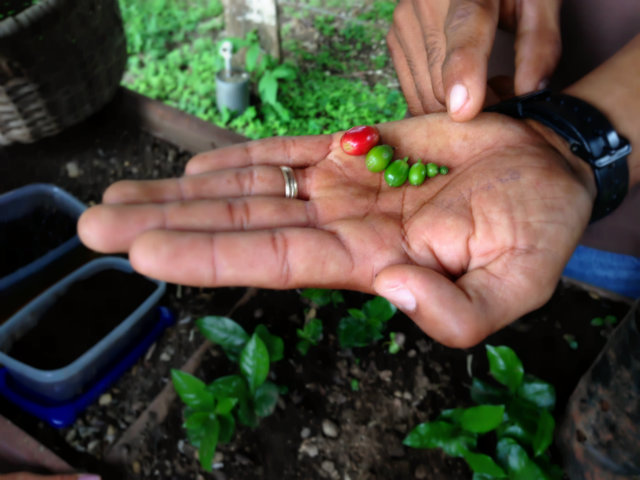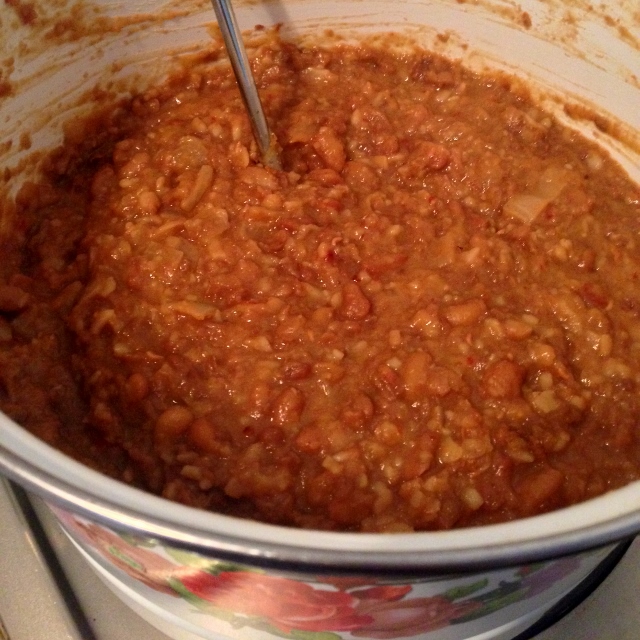31May14

This is Dennis from Café Diriá showing us what a coffee cereza (cherry) looks like throughout its six-month maturation. We’re coffee addicts and coffee is one of Costa Rica’s top agricultural exports (the other two are pineapple and bananas), so we took a coffee tour with two of our classmates.
Don’t laugh at my shorts. I haven’t owned shorts like this since I was eight years old, but they’re perfect for this hot weather. And they were the only ones I could find that didn’t have Costa Rica or pura vida written on the butt.
The guy to our right is a French-speaking Canadian and the woman on the right is from Switzerland and speaks Romansh. She and her partner are going to travel Latin America for a year, but she came here early to learn Spanish. She came to Costa Rica not speaking a word of Spanish and is fully conversant after just five weeks! She has five more weeks in the school.
The beneficio, which is the term used for a coffee processing plant, is located in Hojancha, about an hour from Sámara. But the coffee grows on fincas or estates that are located higher in the mountains since coffee grows best at higher altitudes.
Right next door to the beneficio is a big grouping of spiny cedar trees. They’re grown for building.
OK, back to coffee. I asked Dennis where Café Diriá got its name, and he said that Diriá was the name of an indigenous man who led locals in uprising against Christopher Columbus way back when.
Because the coffee isn’t actually grown here, he took us to this demonstration area to show us the plants and the cerezas at different stages of growth. Costa Rica only grows one type of coffee: arabica. Why? It’s higher quality than other varieties, such as robusta. Since Costa Rica is a small country and can’t compete against countries like Brazil, Colombia, Vietnam or Ethiopia in terms of quantity, they instead compete on quality. In fact, the government issued a directive to all coffee producers to only grow arabica coffee in order to strengthen their position in the market.
To process the coffee, there is a very long, multi-step process to prepare the beans and remove the many cáscaras or skins/peels. That’s what happens at the beneficio.
There are also several processes to identify the highest quality beans. One involves actual taste-testing, and Dennis is a taste-tester. In order to be a taste-tester, you have to meet four requirements:
- No drinking liquor
- No eating chiles
- No smoking
- And a fourth one that neither of us can remember (!)
Anyhow, the point is that you can’t do anything that alters your ability to taste. After the long process, this is what you end up with.
These are the beans in their pre-roasted form and they are exported this way. About 85 percent of the beans grown and processed in Costa Rica are exported — about half to the United States — and the other 15 percent stay within the country for domestic consumption.
All in all, we learned a lot and have a lot more respect for what goes into making a cup of coffee! Oh, and of course we got to drink some coffee.
We made it back to Sámara just in time to catch the sunset.













